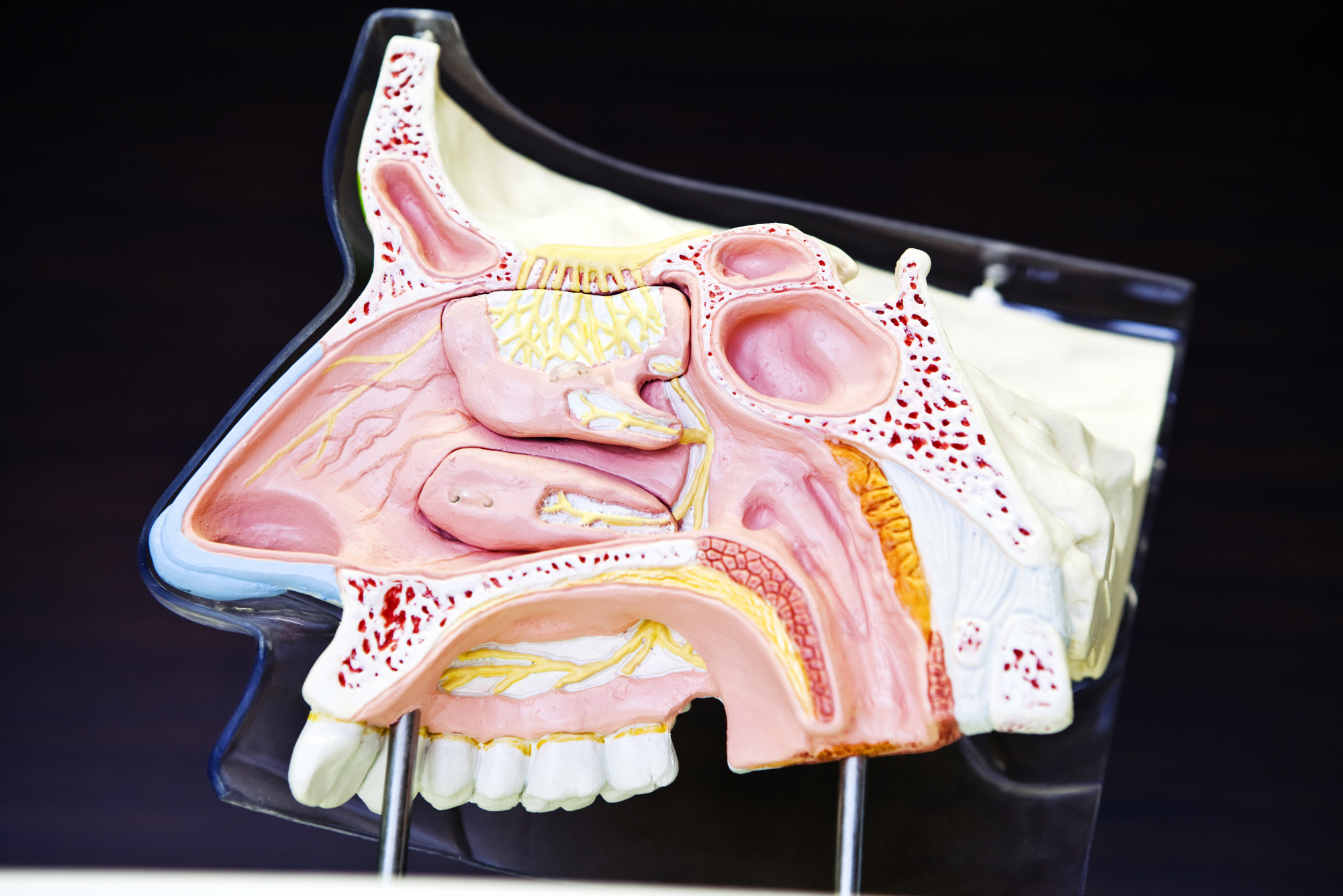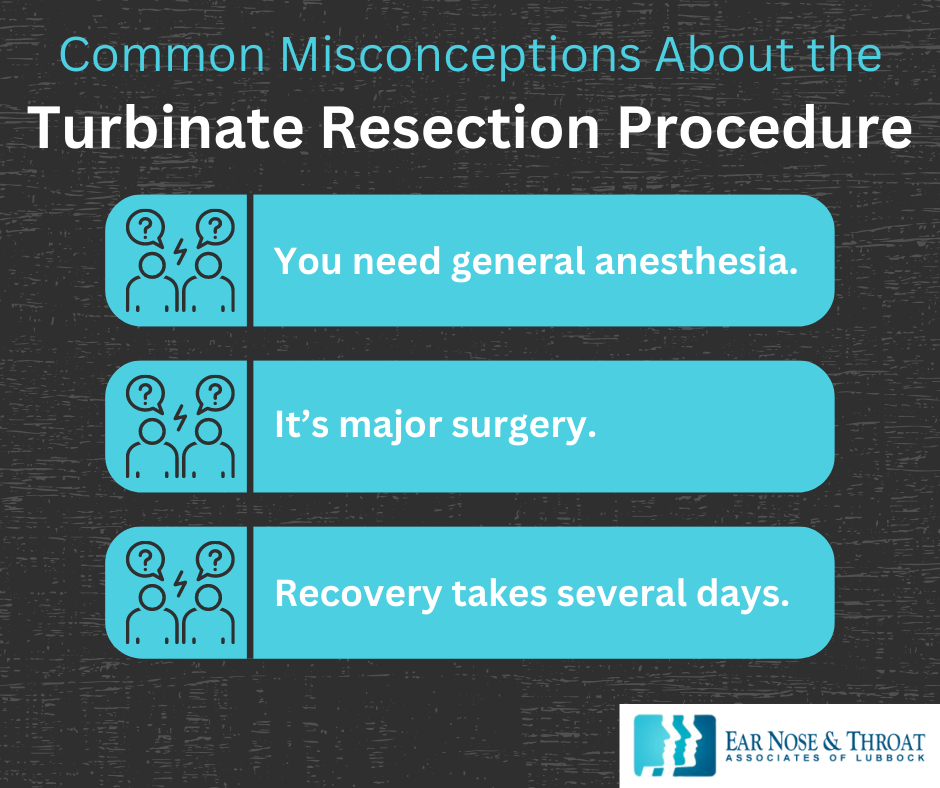Before, During and After Your In-office Turbinate Resection

Hearing the words “turbinate resection” come out of your doctor’s mouth might make you want to run. We get it. It sounds intimidating!
Fortunately, a turbinate resection isn’t nearly as scary as you think.
In this post, find out how simple and easy a turbinate resection really is and how it can help you start breathing more comfortably.
Why Turbinates Matter
Let’s quickly review what turbinates are and why they’re important.
Turbinates are small, spongy, finger-like structures that lie along the length of your nasal wall. Each of your nasal passages holds three turbinates: the superior, middle, and inferior turbinates. Their job is to warm and humidify the air you inhale through your nose and regulate nasal breathing.
The trouble comes when allergies or infections make your turbinates swell. This swelling, especially of the inferior turbinate, constricts the nasal airway and makes it difficult to breathe through your nose. If the swelling becomes frequent, you can end up with a chronic breathing dilemma on your hands.
Common Misconceptions About the Turbinate Resection Procedure
Because a turbinate resection sounds intimidating, some misconceptions have grown up around it. Here are some of the most common:
- You need general anesthesia. Although some ENTs may use general anesthesia for a turbinate resection, we simply employ local anesthesia for our patients. They don’t experience any discomfort during the procedure, which is simple, easy, and very well-tolerated.
- It’s major surgery. On the contrary, a turbinate resection is a minimally-invasive procedure we complete quickly and easily at our office. Sometimes we even do it in conjunction with other procedures, like a balloon sinuplasty or VivAer.
- Recovery takes several days. Recovery from a turbinate resection is very quick and easy. You can resume work and regular activities the day after your procedure.

What Is a Turbinate Resection?
If swollen turbinates continually restrict your breathing, we may recommend a turbinate resection to alleviate the problem.
Years ago, completely or partially cutting off the inferior turbinate was an accepted practice. However, that’s no longer recommended, and it’s not what we do in our office.
Today, a turbinate resection is a much more conservative procedure, simply reducing the inferior turbinate’s size by a few millimeters. Although it’s a minimal change, it can tremendously impact your nasal breathing and help with issues like sinus infections and snoring.
What to Expect During a Turbinate Resection
During a turbinate resection, you’ll be awake but won’t feel any pain.
First, we’ll gently make a small incision at the front of the turbinate.
Then, we’ll insert a tiny, two-millimeter blade into the incision and remove some of the turbinate’s interior tissue to reduce its size. The process is similar to liposuction, just on a much smaller level.
By removing a small portion of the spongy tissue, the turbinate can’t swell as much and block your nasal passages, allowing you to breathe easier.
What Is the Goal of a Turbinate Resection?
If you get sinus infections or have allergy symptoms, you may already be familiar with swollen turbinates, blocked nasal passages, and difficulty breathing.
The ultimate goal of a turbinate resection is to reduce the amount your inferior turbinates can swell. Then, those pesky allergies and sinus infections can’t interfere with your breathing so much. You may even notice reduced snoring!
Turbinate Resection: Final Thoughts
If your ENT has recommended a turbinate resection, you might feel a little nervous. This is normal, but we hope the above description of the simplicity of the procedure will set your mind at ease. You deserve to breathe freely!
Dr. Scolaro is a board-certified Otolaryngologist servicing the South Plains area. He has been practicing in Lubbock since 1990 and has earned a reputation as a skilled and experienced surgeon. He currently serves as the Medical Director for Covenant High Plains Surgery Center campuses, is a member of Covenant Health Partners and is an adjunct faculty professor for Texas Tech University Health Sciences Center School of Medicine. Learn more about Dr. Scolaro.
Categories:







